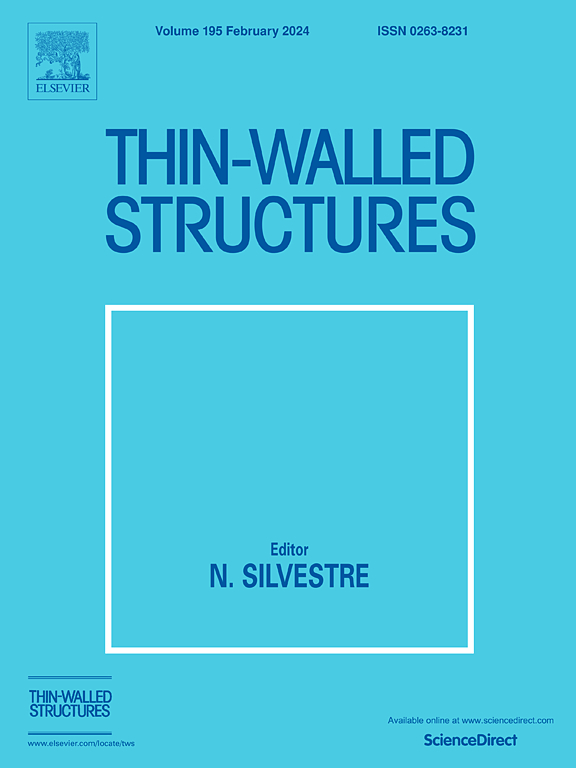利用全耦合数值模拟研究张拉膜结构风-结构相互作用中的多模式耦合效应
IF 5.7
1区 工程技术
Q1 ENGINEERING, CIVIL
引用次数: 0
摘要
本文章由计算机程序翻译,如有差异,请以英文原文为准。
Investigation on multi-mode coupling effects in wind-structure interaction of tension membrane structures using fully-coupled numerical simulation
Tension membrane structures may undergo significant wind-structure interactions (WSI), during which multi-mode coupling phenomenon can be commonly observed as the structural span, spatial tension, and openness increase. The lack of understanding of multi-mode coupling effects of tension membrane structures is a primary obstacle to establishing practical and feasible response estimation method for such structures considering WSI. In this research, the underlying mechanisms of multi-mode coupling effects in WSI of tension membrane structures are revealed based on numerical simulations. A one-way tensioned, open-type membrane structure is chosen to be the object because of its relatively idealized geometry for analysis of WSI mechanism, which is a simplified shape compared to typical membrane structures. Fully-coupled simulations are utilized to reproduce pre-existing aero-elastic experiment and well validated against the reference experimental results. Additionally, a modal identification method based on proper orthogonal decomposition (POD) technique is proposed for precisely decomposing the coupled vibrating modes. It is found that the multi-mode coupling phenomenon is initiated by the difference in the vortex-structure interaction between upper and lower sides of the membrane, due to the disparities in pneumatic shape between the two sides. Moreover, the modal jump and modal resonance are effectively examined and revealed through the proposed modal identification method. Energy transfer analysis shows that the modal jump is resulted by the negative aerodynamic damping, while the modal resonance, the main reason of the rapid amplification and instability of the membrane vibration, is triggered by the added mass. The findings in this study lay the foundation of establishing the response estimation method for tension membrane structures considering multi-mode coupling.
求助全文
通过发布文献求助,成功后即可免费获取论文全文。
去求助
来源期刊

Thin-Walled Structures
工程技术-工程:土木
CiteScore
9.60
自引率
20.30%
发文量
801
审稿时长
66 days
期刊介绍:
Thin-walled structures comprises an important and growing proportion of engineering construction with areas of application becoming increasingly diverse, ranging from aircraft, bridges, ships and oil rigs to storage vessels, industrial buildings and warehouses.
Many factors, including cost and weight economy, new materials and processes and the growth of powerful methods of analysis have contributed to this growth, and led to the need for a journal which concentrates specifically on structures in which problems arise due to the thinness of the walls. This field includes cold– formed sections, plate and shell structures, reinforced plastics structures and aluminium structures, and is of importance in many branches of engineering.
The primary criterion for consideration of papers in Thin–Walled Structures is that they must be concerned with thin–walled structures or the basic problems inherent in thin–walled structures. Provided this criterion is satisfied no restriction is placed on the type of construction, material or field of application. Papers on theory, experiment, design, etc., are published and it is expected that many papers will contain aspects of all three.
 求助内容:
求助内容: 应助结果提醒方式:
应助结果提醒方式:


